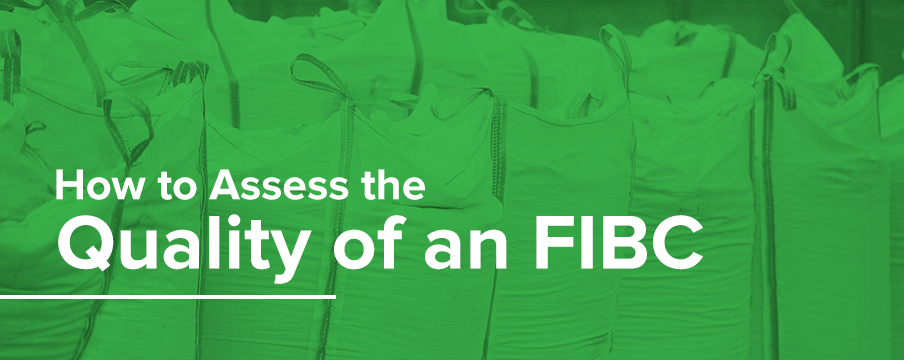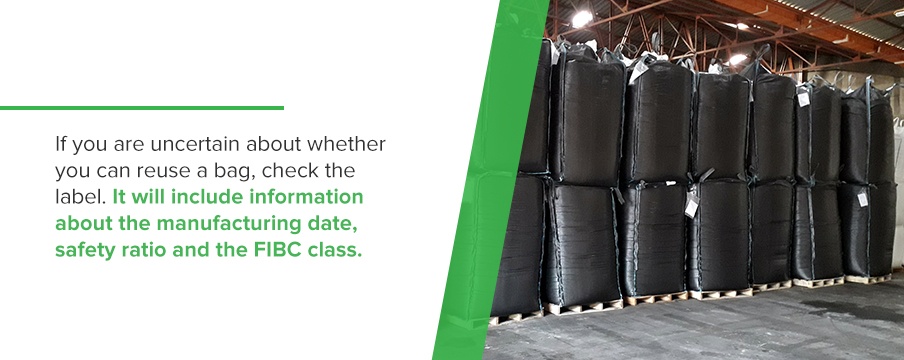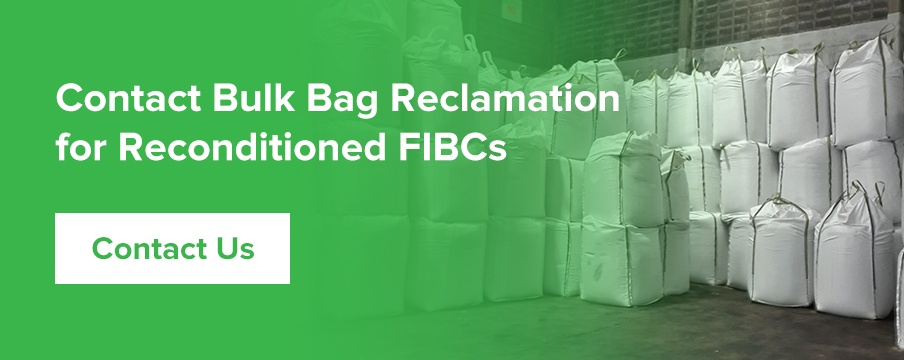How to Assess the Quality of an FIBC
Using reconditioned bags for storage can reduce waste in landfills and cut costs for those who use the bags. Reconditioned bags perform like new bags and cost less. Their performance comes from an intense process of bag cleaning and restoring, followed by testing to verify the integrity of the reconditioned bag. To supplement this reclamation, buyers should ask questions about the bags’ reconditioning process and history to find out how to measure bulk bag quality for reconditioned bags. Using the answers to these questions can give you confidence in your choice of reconditioned FIBCs.
FIBC Quality Assessment
Before sending FIBCs through the process of cleaning and reconditioning, someone must assess the bags to determine if they can safely proceed. Bags that a reconditioning service should discard have the following serious flaws that the process cannot repair:
- Splinters in the material
- Moldy, wet or moisture-damaged conditions
- Damage to lift straps
- Damage to body and other attachment areas
- Contamination or use with hazardous materials
The above flaws make the bags dangerous to reuse because cleaning cannot remove mold, contamination or wood splinters. Reconditioning cannot restore damaged lift straps or damage to bag body. And any FIBC used for handling hazardous materials has a single use and cannot move to the reconditioning process.
What Has the Reconditioned Bulk Bag Held in the Past?
Prior conditions of the reconditioned bulk bag also play a role in whether the container is safe for reuse. For instance, poor storage conditions that caused UV damage to the bag could preclude it from reuse. Other conditions that could reduce the life span of a bag or exclude it from safe reuse include:
- Exposure to temperature extremes
- Lack of protection from precipitation
- Storage in high humidity
- Improper handling
- Use with contaminating products
How you stack the bags in storage can also play a role in their integrity and reusability. Stacking too heavy a weight on top of bags or failing to use an appropriate stacking method can cause the bags to compress, which could cause them to lose their shape or spill their contents. Physical signs on the bag and testing should keep bags that were damaged from improper storage out of the stock of reconditioned FIBCs.
If you are uncertain about whether you can reuse a bag, check the label. It will include information about the manufacturing date, safety ratio and the FIBC class. Additionally, FIBC quality assessment after cleaning and reconditioning should ensure the restored bags meet standards for new bags.
When using reconditioned bags, the FIBCA recommends only using them for the same application and only after rigorous cleaning, reconditioning and testing. To ensure the safety of reused bags, manufacturers must keep records that track several components of the FIBC’s history — including the origins of the bag, what the FIBC held and the number of uses the bag has experienced.
Cleaning
Once the company in charge of reclamation determines that bags can safely undergo the reconditioning process, cleaning begins. This process removes unwanted debris. At the end of this cleaning step, the bag should have everything taken out of its interior. Also, if the bag had a liner, the cleaning process requires the replacement of that component.
Reconditioning
Besides cleaning, the restoration process for reclaimed bags includes reconditioning to return the bag to a like-new condition. The bag restorer will replace web ties, cord locks and labels. Each component needs replacement because they allow for safe, efficient use of the container.
Web ties, also known as tape, bias strap or spout ties, are made from polypropylene, polyester or multifilament yarn. These parts connect the outlet and inlet spouts on the bag. Cord locks hold the rope onto the spout without the need for creating possibly weak hand-tied knots. Cord locks may not always need replacing, especially if the original bag did not have them. The label includes important safety information about the use of the bag and its safety ratio.
Inspection and FIBC Quality Assurance Testing
The last stage of reconditioning FIBCs involves inspecting the finished bags and testing a sample for quality assurance. Bags that pass inspection testing go for sale. This inspection phase and testing require three steps:
1. Testing
Each set of reconditioned bags will have a random number of FIBCs pulled for top lift testing. Testing frequency and the number of tested bags depend on the requirements of the manufacturer or user. The chosen bags should come from a random selection to ensure the set’s reconditioning process meets minimum quality standards.
2. Meeting Standards
The top lift testing results for reconditioned bags must meet the most recent update of the ISO 21898:2004 standard. This standard outlines the quality, testing, materials, design, construction, markings and certification for FIBCs used only for non-hazardous materials. This standard is the same standard that new bags must meet. Therefore, reconditioned bags that fulfill the requirements of this standard have a like-new condition.
3. Maintaining Records
Results from the top lift tests for reconditioned bags should remain with the manufacturer for at least three years. Keeping test results for this long allows future bag users to trace their use and reuse to ensure their safety.
Contact Bulk Bag Reclamation for Reconditioned FIBCs
All the FIBCs sold at Bulk Bag Reclamation undergo a thorough quality assurance process to verify their durability and usability for our customers. If you have questions about our reconditioning process, contact us at Bulk Bag Reclamation. Our reconditioned FIBCs provide your business an environmentally friendly option that is also kind to your budget. If you would like to integrate reconditioned FIBCs into your operation now, request a quote today.



